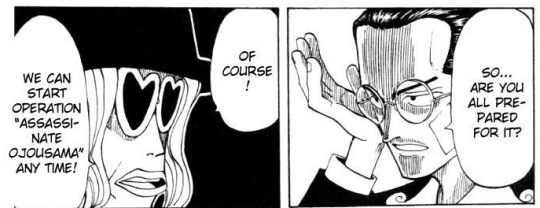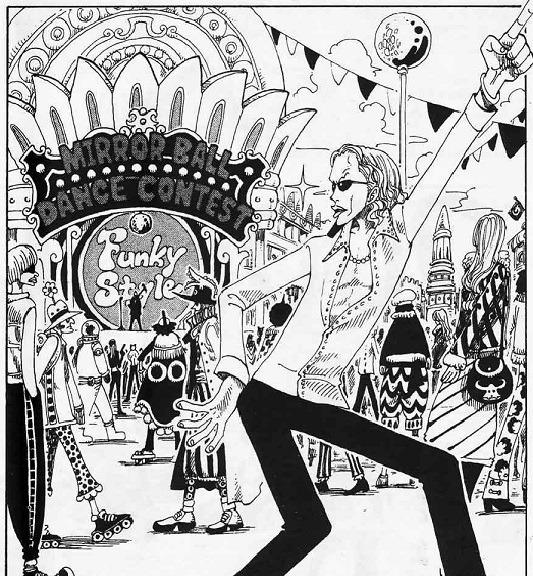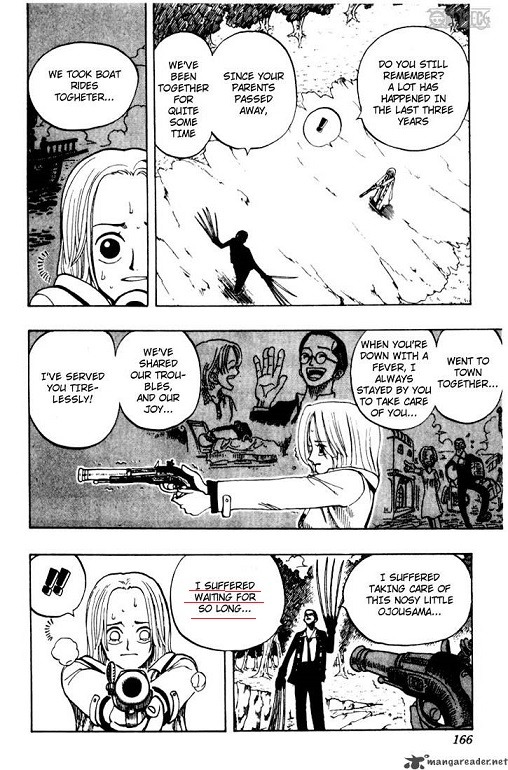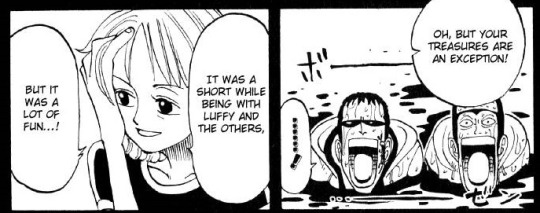#and Oda has yet to give us anything about his pre-mads days
Explore tagged Tumblr posts
Note
okay dude you know i love a backstory. what’s the DEAL with caesar clown. where’d he come from. who raised him. why is he the way that he is. GIVE ME LOOORREEE
OOOO :D OKAY so Caesar doesn't have anything canonically before his days in MADS (which was this illegal group of mad scientists that essentially came together to make the world a better place... except 3 out of the top 4 scientists were Evil, including Caesar lol)
SO
I like to think he came from an upper middle class-bordering-on-rich family. He had one older sibling who was maybe 8-10 years older than him, so they were never close. He was raised more by a nanny than his own parents, who were incredibly neglectful of him. Out of the two of them, his mother gave him more attention, and even then it was rare. She was much closer to Caesar's sister and lathered her with attention.
His father was practically a stranger to him and didn't take interest in his son at all until he was a teenager, and by then Caesar's interest and love of science had strongly taken hold... Which was a huge disappointment to his father, who wanted a strong son who had an instinct for business. Meanwhile, Caesar was a pale, lanky, nerdy twink with no friends (poor wee lamb :( )
Most of Caesar's childhood peers thought him odd, best to ignore most of the time. They used to tease him when they were all younger, but Caesar learned how to fight back quickly - not really with fists, but in a feral "I'm going to bite you if you touch me" kind of way. And since the island he lived on was small enough that everybody knew everyone, he never got the chance to make new friends as he grew into his teens.
He was a lonely teen, but he found his joy in the experiments he conducted in his own bedroom. He read every science book he could get his hands on, though his favorite subject to study was chemistry. He was incredibly smart, our equivalent of an all-As student. He might have been a disappointment to his father, but his intelligence allowed for his parents to agree to let him attend university on a neighboring island.
Caesar finally learned how to make friends... and lose them quickly because he was an asshole who thought very highly of himself. He learned very little at university, his knowledge far ahead of what was being taught to him and as such, he found it boring. However, access to the university's laboratories allowed for him to run unauthorized experiments in his free time. In fact, he ended up burning down a building and was consequentially expelled.
He was more irritated that his experiment hadn't gone the way he had planned than upset of being kicked out. But his parents were furious with him and cut off his funds entirely. Caesar took it pretty well, seeing the lack of money has an inconvenience. He didn't return home. There was nothing for him there. Instead, he began to travel, picking up scientific knowledge here and there.
Eventually he gained a reputation to the point the Science Division of the World Government tried to get in contact with him. But Caesar wasn't interested in being a dog for the WG and turned them down. That's when Dr. Vegapunk found him and recruited him into MADS. The rest is history~
#lumiereandcogsworth#caesar clown headcanons#THIS IS ALL HEADCANON#I JUST THINK ABOUT HIM A LOT OK#and Oda has yet to give us anything about his pre-mads days#but yeah that's totes why he has a DESIRE to be the greatest scientist#why he acts so entitled#why he wants LOTS of attention and praise#having daddy issues that he projects on vegapunk? WHAT WHO SAID THAT? :)#oops i ended up writing more than intended loool#thank you lyd <333
6 notes
·
View notes
Text
Building up to Arlong Part II
In my previous post I started my analysis of the East Blue Saga, looking at the arcs leading up to Arlong Park to see how Eiichiro Oda grew as both an author and an artist in those early chapters as he built the series slowly towards the first “epic” moments of One Piece.
I ended that post with Orange Town and how Buggy managed to do something no villain before him had done (be memorable and interesting). It’s interesting to see how Oda follows up on this breakthrough with...well, this guy

I don’t really have much to say about Gaimon’s arc...chapter...whatever the heck it is. It’s completely random and doesn’t fit well with the rest of the East Blue chapters.To be fair to Oda, he does cut loose and show off some of his wacky creativity, and there is some world building as the Red Line gets its first inauspicious mention.
There’s also something to be said about Luffy and Nami getting to know one another better and further insight into Luffy as a character, but it’s not anything that isn’t accomplished better in other places

I will admit this made me laugh, though
Syrup Village
Moving on, we jump to Usopp’s recruitment arc. This one is one of the more intriguing of the East Blue arcs (intriguing not equaling good) in that I liked a lot of the individual pieces but found the overall product to be a little lackluster.
I think part of this is the setting. One Piece is at its best when it’s exploring wild and crazy new places, but Oda hasn’t gotten to that point in the series yet. This arc’s supporting cast is also pretty generic. Usopp’s Pirate Gang aren’t the most annoying little kids I’ve ever seen, but they are annoying little kids. Kaya is...okay. She shows some real gumption after Kuro shows his true colors, but I’m not sure that makes up for all the time she spent being boring early on.
Usopp himself can be hard to like, but that’s not necessarily a bad thing. Usopp is the everyman of One Piece. He’s not a power fantasy like Luffy or Zoro nor supernaturally talented like Nami. He has the greatest personal flaws of any of the Straw Hats, and his dream is the only one in the crew to be internal rather than external. With that in mind, firmly establishing Usopp’s foibles and his weaknesses makes his victories - both in this arc and later in the series - all the sweeter, even if it makes these chapters a bit of a slog to get through.
This arc does manage two things that would later become staples of the series, and once again we have our villains to thank

There are some very specific trends in One Piece’s villainous organizations. Most are headed by the main antagonist of the arc and are fought by Luffy. Below the leader there’s usually an annoying, but decently strong character taken out relatively early on (think Pearl, Mr.5/Miss Valentine, Satori, etc). This character acts as both hype and a teaser for bigger fights to come, but also carry some narrative weight by giving insight into the plans/mindset/priorities of the enemy organization as a whole.
Lastly, Oda usually adds a lovable, quirky villain who, if not the second in command, is one of the strongest fighters in the arc. These characters humanize the Straw Hat’s enemies, add levity, and are generally really fun - so much so that more often then not they return later in the series as a recurring character.
The Nyaban brothers fit into the annoying but decently strong category, but Jango steals the show as the first lovable, quirky minion of the series (I think Oda tried with Buggy’s crew, but they lack the necessary charm to pull it off). Heck, the first thing we see him do is accidentally hypnotize himself after moonwalking down the path to Usopp’s village. Later on it’s hard not to feel at least a little bit sorry for the guy when we see the hopeless position Kuro has put him in. Jango may be an antagonist, but he’s fun and likable and honestly having him join the marines through the power of dance is amazing.
Gin, Hatchan, Betham, and Kaku all fit to one degree of another into this mold, and it wouldn’t have been possible without Jango.

Secondly, Kuro is the first cerebral villain of the series. Alvida and Morgan relied on brute strength, and while Buggy exhibited a certain amount of cunning he, too, was focused on overwhelming firepower and his Devil Fruit to win the day.
Kuro of a Thousand Plans. His epithet says it all. Kuro is conniving, sneaky, underhanded, and without a shred of honor to hold him back as he meticulously plans to murder a sickly girl for nothing more than his own peace and comfort.
All of Oda’s most memorable villains have this Machiavellian mindset. Crocodile, Doflamingo, and most of all Blackbeard are all chess masters to one degree or another. Though their end goals are completely different, you can see a lot of Crocodile especially in how Kuro built up an unshakable reputation while biding his time to strike. They even share a penchant for breaking speeches

It’s such a little thing, but the words “I suffered” elevate Kuro to one of my favorite East Blue villains, well above even Buggy. It’s so needlessly cruel, twisting the knife right where he knows it will hurt most, just because he can, and I freaking love it.
As a side note before moving on, Oda’s attention to detail is also to be commended during this arc. The way Kuro adjusts his glasses makes for an excellent and chilling re-read bonus, and connecting Morgan’s past to Kuro’s gives the former a little more depth than before.
The Baratie
It’s interesting to compare the Baratie to Syrup village because in many ways these arcs have opposite strengths and weaknesses. Where Syrup village had strong antagonists and a weak setting/side characters, the Baratie is the most memorable locale of the East Blue Saga and has an extremely strong secondary cast.
The Baratie as a concept brilliantly fits into the world of One Piece. The idea of a floating restaurant in a world that’s 90% ocean makes perfect sense, and it’s one of the times that Oda integrates the setting with his characterization. It’s not creativity for creativity’s sake, and unlike Gaimon’s sub-arc...chapter...whatever that was there’s a method behind the madness.

This excellent setup is the backdrop to some superb character writing. Sanji is by no means my favorite Straw Hat, but his strained relationship between Zeff and the rest of the Baratie is done extremely well. It’s one of those situations where no one is 100% right or wrong and you just wish they’d all enter counseling or something so they could figure out how to talk to one another without resorting to violence.
It doesn’t hurt that this is when Oda figures out how to properly use the power of Tragic Backstory (tm) to its most devastating effect. While no (named) characters die, Sanji’s backstory is raw, painful, and emotional in all the right places. It’s in expressing these extreme emotions where Oda’s cartoony style is at its most effective. Oda’s characters don’t just cry, they cry ugly, and that’s so important when setting the tone of these heavy moments.

I don’t have much to say on Kreig or his crew because he’s boring and I despise Pearl with every fiber of my being, but once again we get some fun fight choreography. I especially like the sequence when Sanji spits his cigarette into Gin’s face before kicking him halfway across the deck, only to get a tonfa to the ribs for his effort.
Also this happens, and it’s soooo satisfying to see Kreig get punched in the face. 10/10, would watch again

But the one thing that the Baratie does best of all the East Blue arcs - better than even Arlong Park - is world building. The entire series people have been telling Luffy and co. that the Grand Line is super dangerous and that he shouldn’t go, but it’s only here that we see that we see that played out in real time with Mihawk’s introduction to the plot. The Straw Hats have thus far been presented as invincible badasses when they’re nothing more than a big fish in a little pond.
All the stuff with Mihawk is big-picture storytelling and one of Zoro’s best moments. I don’t think that anyone who follows One Piece needs to be told how well Oda does at developing his world. More important to the build up to Arlong Park is Oda’s use of immediate foreshadowing. Right about the time Mihawk shows up Johnny and Yosaku catch Nami checking out bounties, specifically Arlong’s though he’s never named and we don’t see his picture. Immediately after Nami steals the Going Merry so she can run away, and we see her facade start to crack a little under pressure. Note especially how utterly exhausted she looks in this panel here

This all happens in the same chapter Zoro challenges Mihawk, and the action cuts between the swordsman’s pre-fight banter and the story of how Johnny and Yosaku lost the Merry. Zoro’s fight is the more immediate concern, but when constructing the chapter, instead of going out on that high note Oda cuts back to Nami a second time, this time sailing alone on the open ocean

If it weren’t already obvious by the whole rest of the series, this scene proves beyond a shadow of a doubt that there’s more to Nami than meets the eye. This is the first time we see her truly vulnerable, almost to the point of being broken, and it puts a completely different meaning to all her actions previous and what we’ll see coming up in later chapters.
I do think there is some significance to putting the Nami scene last over Zoro’s, because as the last thing the audience reads it’s what tends to stick in their mind longest week to week. We don’t see Nami again for a long time, and when we do all her defensive walls are firmly back in place. This is the Nami Oda wants us to remember when she’s going around Cocoyashi village telling Luffy to leave her the hell alone.
The Conclusion
What really stands out to me when going over these early chapters leading up to Arlong Park is Oda’s vision for the series from the word go, even when his execution isn’t as consistent as later on in the series. The whole East Blue saga exists to do two things 1) build the core of the Straw Hat Pirates 2) answer the question Who is Luffy.
Each antagonist from the lowly Alvida to Arlong himself has a weakness in their leadership ability that directly foils Luffy. These chapters show us what kind of pirate, what kind of captain, and most of all what kind of man Monkey D Luffy is, and what values he will and will not stand for.
Arlong Park is the emotional peak of the East Blue saga, and it works because Oda has taken the time to build up to that peak. The impact would not have been the same if it had been placed earlier in the series because it would not feel earned without seeing Nami interact with the rest of the crew for as long as she did. Nor would it have worked if Oda hadn’t placed the breadcrumbs of her story for the audience to pick up along the way.
It’s impossible for every arc to hit all the high points that Arlong Park does, because not all arcs are designed to do so, nor should they. That being said, there’s a steady increase in quality seen even in these early chapters as Oda gets his sea legs and figures out exactly what story he’s trying to tell.
#one piece#analysis#manga#monkey d. luffy#nami#zoro#East Blue Saga#Arlong Park#Eiichiro Oda#creative-type analyzes
64 notes
·
View notes